News archive
Paolo Cignoni: Outstanding Technical Contributions Award
Paolo Cignoni: Outstanding Technical Contributions Award
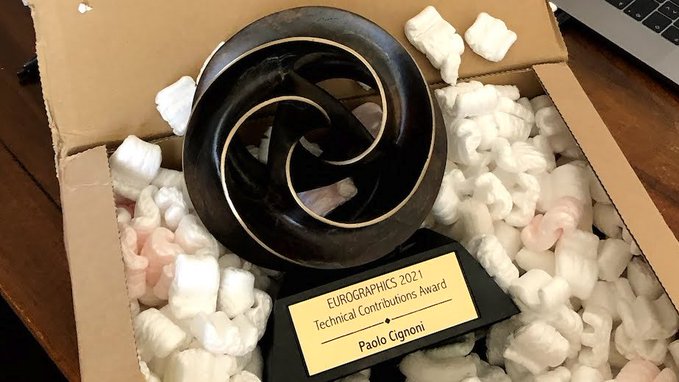 Eurographics conferred to VC Lab Head Paolo Cignoni the 2021 Outstanding Technical Contributions Award for his extraordinary technical contribution to 3D graphics!
Eurographics conferred to VC Lab Head Paolo Cignoni the 2021 Outstanding Technical Contributions Award for his extraordinary technical contribution to 3D graphics!
Best paper at GCH2020
 The paper 'Another Brick in the Wall: Improving the Assisted Semantic Segmentation of Masonry Walls' by Gaia Pavoni, Francesca Giuliani, Anna De Falco, Massimiliano Corsini, Federico Ponchio, Marco Callieri, and Paolo Cignoni presented at the XVIII Eurographics Workshop on Graphics and Cultural Heritage (EG-GCH2020) has received the best paper award at the conference.
The paper 'Another Brick in the Wall: Improving the Assisted Semantic Segmentation of Masonry Walls' by Gaia Pavoni, Francesca Giuliani, Anna De Falco, Massimiliano Corsini, Federico Ponchio, Marco Callieri, and Paolo Cignoni presented at the XVIII Eurographics Workshop on Graphics and Cultural Heritage (EG-GCH2020) has received the best paper award at the conference.
A ‘digital Loggia’ for Raphael and his workshop in Villa Farnesina, Rome
Oct 6th, 2020
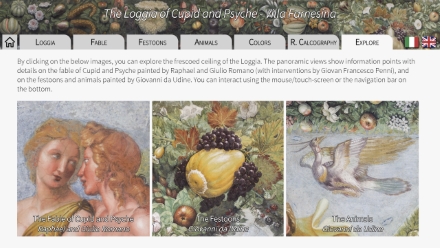
An Interactive Digital System was developed by Gianpaolo Palma and Eliana Siotto of the Visual Computing Lab of ISTI-CNR to explore the frescoed ceiling of the Loggia of Cupid and Psyche at the time of the COVID-19. The system (http://vcg.isti.cnr.it/farnesina/loggia) was created in collaboration with the Accademia Nazionale dei Lincei within the celebrations for the fifth centenary of Raphael’s death, and it is mentioned among the “136 reopening projects in Italy and worldwide”.
The system has encountered a great media promotion in the leading specialized magazines, national and local media, social network and web (TG3 (17':35'), Rai Cultura, Arte Sky, Finestre sull’Arte, Arte Magazine, Corriere della Sera, Repubblica Roma, La Nazione di Pisa, Webinar – The Cyprus Institute, Webinar – Italian Cultural Institutes of the United States and Canada, etc.) with interesting effects on the cultural enjoyment.
The dedicated interactive system provides practical support at the exhibition 'Raphael in Villa Farnesina: Galatea and Psyche', opened today (October 6, 2020 – January 6, 2021).
Best paper award at UNDERWATER 3D RECORDING & MODELLING
May 13th 2019
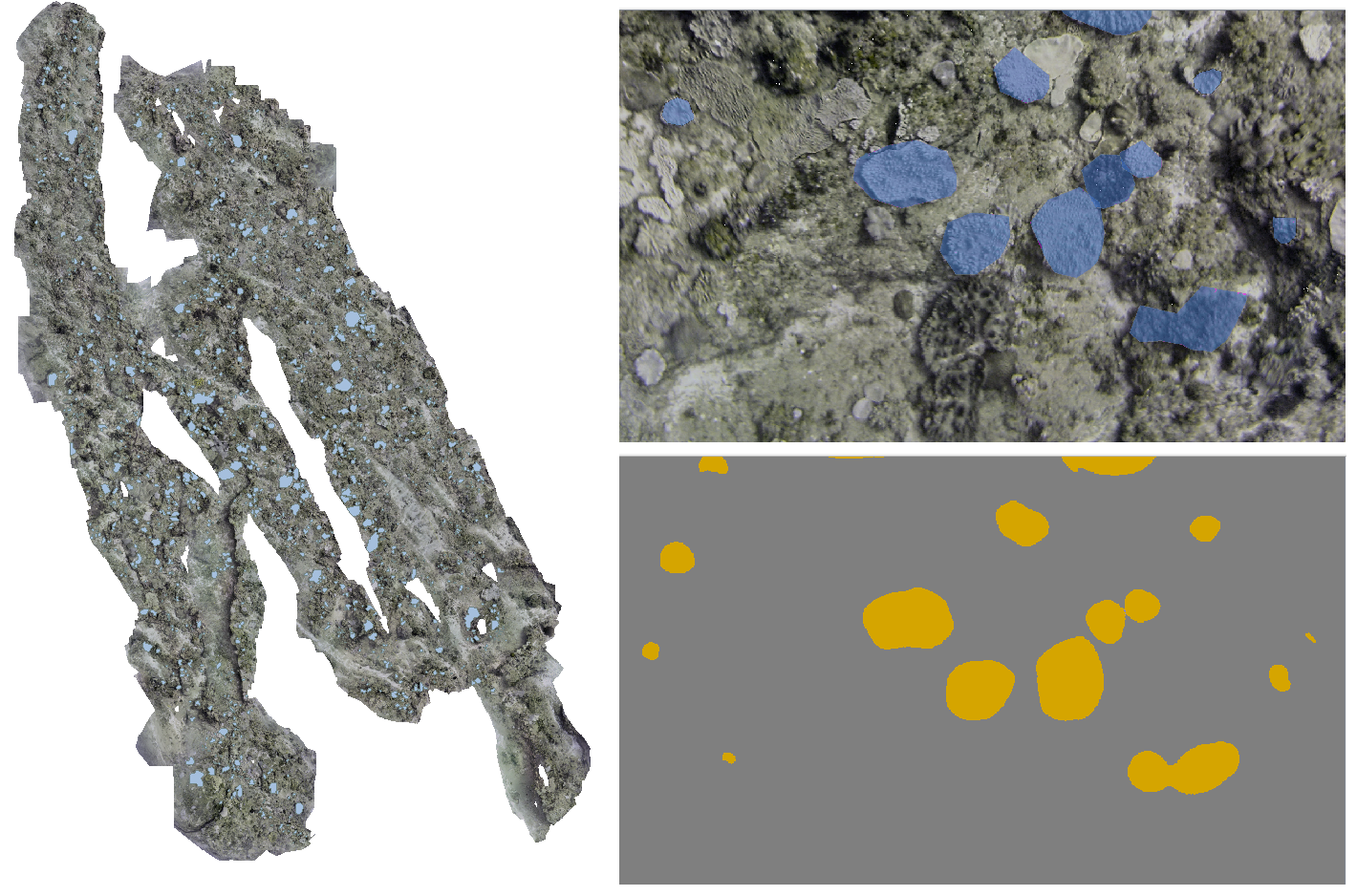
The paper 'Semantic Segmentation of Benthic Communities from Ortho-mosaic Maps' by G. Pavoni, M. Corsini, M. Callieri, M. Palma and R. Scopigno, presented at the 2nd international conference Underwater 3D Recording and Modelling - A Tool for Modern Applications and CH Recording has been considered among the best papers at the conference.
Matteo Dellepiane passed away....
Jan 15th 2019
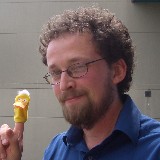
Our dear friend and colleague Matteo Dellepiane passed away on January 13th, 2019, after fighting a few months with a cancer.
He was an extraordinary person in all sides of his personality.
He leaves a huge empty space in our lab and in his family.
To honor his memory, we have created a web page , to allow any of his colleagues/friends to leave his memory on Matteo.
Visual Computing Lab won two Award EG-Italy Awards for the best thesis in visual computing
Sep 19th, 2018
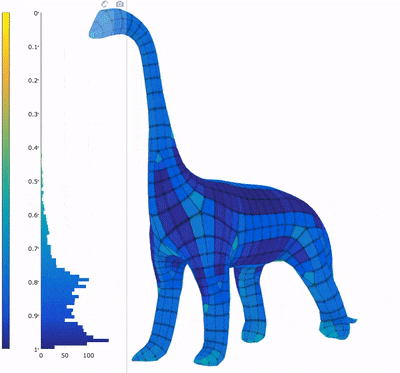
Matteo Bracci and Thomas Alderighi have won both the two the EG-Italy Awards for the best Bachelor and Master thesis in visual computing
Matteo's thesis described the development of HexaLab an innovative WebGL application for real time visualization, exploration and assessment of hexahedral. The system runs directly in a web browser and targets both users and scholars who employ hexahedral meshesfor Finite Element Analysis, and allows to readily inspect and check mesh quality, assessing its usability for simulations.
Thomas's thesis described MetaMolds a novel technique for the fabrication of digital objects through reusable silicone molds. This new method allows for the automatic generation of special 3D printable structures, called Metamolds, that are used as a rigid mold for the silicone mold parts, automatically determining the mold shape given an input digital object.
Metamolds: our latest SIGGRAPH paper!
Sep 6th, 2018
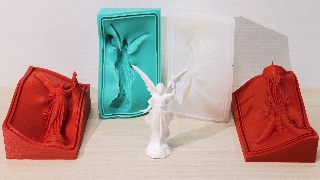
This August we presented our latest paper about Computational Fabrication at SIGGRAPH 2018, Vancouver. Our paper has also been selected for the official trailer of the technical papers program!
In the paper, titled "Metamolds: Computational Design of Silicone Molds", we presented a novel technique for the fabrication of digital objects through reusable silicone molds. The method allows for the automatic generation of special 3D printable structures, called Metamolds, that are used as a rigid mold for the silicone mold parts, automatically determining the mold shape given an input digital object.
The technique we proposed is automatic and doesn't require any previous knowledge by the user, and is able to reproduce objects with complex shapes.
Please, for more details, or to have a look at the paper, refer to the public page of the project!
And don't forget to watch the video!
Hexalab: visualizing complex hexahedral meshes on the web
Jul 9th, 2018
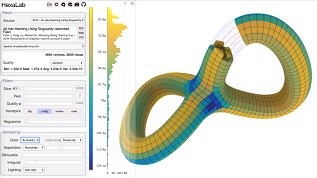
The Visual Compuing Lab has released another tool to the community: HexaLab, a WebGL application for real time visualization, exploration and assessment of hexahedral meshes that runs directly in a web browser (just go to 'HexLab').
This advanced visualization tool targets both users and scholars who employ hexahedral meshes for Finite Element Analysis, and allows to readily inspect and check mesh quality, assessing its usability for simulations.
HexaLab can be used to perform a detailed analysis of the mesh structure, isolating weak points and to generate high quality images using advanced global illumination effects and sophisticated shaping of the elements. To allow effective interactive analysis of the meshing, we support a wide variety of visualization and volume inspection tools like slicing, peeling, quality filtering and minecraft style picking of individual elements.Finally to promote reproducible research and simple access to the state of the art in this field, HexaLab also offers integrated access to a repository containing all the publicly available meshes produced with the most recent papers for hex mesh generation.
Best paper award at ACM Web3D Conf.
Jul 5th, 2018
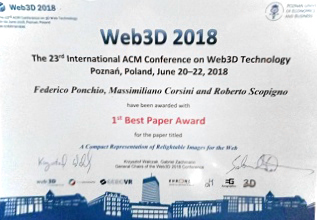
We are proud to announce that our paper, 'A Compact Representation of Relightable Images for theWeb', has been conferred with the Best Paper award at the the 23rd Int. ACM Conference on 3D Web Technology!
Congratulation to our collegues Federico Ponchio, Massimiliano Corsini and Roberto Scopigno.
Tensegrity sculpture inaugurated
Sept 29th, 2017
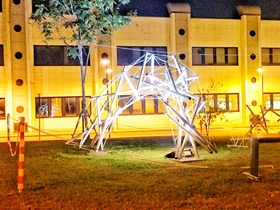
During the last Researcher Night we have officially presented to the public a large Tensegrity structure. It have been built as a proof of the soundness of our approach we introduced in our last Siggraph Asia paper. This Tensegrity sculptural structure was so appealing that the director of the research area decided to permanently place it in the main garden.
Roberto Scopigno gave an invited talk at ICIAP 2017
Sept 13rd, 2017
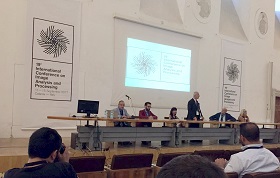
Today Roberto Scopigno, head of the Lab, gave an invited speech at ICIAP 2017 (International Conference on Image Analysis and Processing), held in Catania (Italy). The title of the talk was: ' Visual Technologies for Cultural Heritage: status and perspectives '.
Meshlab SGP Award
Jul 6th, 2017
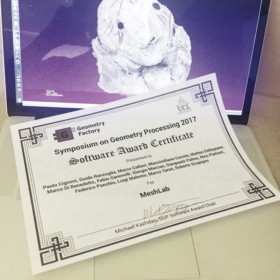 We are proud to proud to announce that on July the 6th, at the Eurographics Symposium on Geometry Processing (SGP), MeshLab has been endowed with the prestigious Eurographics Software Award! The award has been given for having contributed to the scientific progress in Geometry Processing by making the software available to the public such that others can reproduce the results and further build on them in their own research work.
We are proud to proud to announce that on July the 6th, at the Eurographics Symposium on Geometry Processing (SGP), MeshLab has been endowed with the prestigious Eurographics Software Award! The award has been given for having contributed to the scientific progress in Geometry Processing by making the software available to the public such that others can reproduce the results and further build on them in their own research work.
The 'digital Loggia' system presented at the Accademia dei Lincei in Villa Farnesina, Rome
Apr 20th, 2017

The Visual Computing Lab has curated and developed the Interactive Digital System of the Loggia of Cupid and Psyche within the international and itinerant exhibition ' The Loggia of Cupid and Psyche – Raffaello and Giovanni da Udine – Colours of Prosperity: Fruits from the Old and New World in Villa Farnesina, Rome April 20 – July 20 2017 '. The system allows access to the 'digital Loggia' and permits the visitor to navigate freely through the high-resolution panoramic image of the painted ceiling, to admire it from a closer point of view and to consult the results of historical, botanical and scientific analyses performed on the selected species. The system is available online and with an interactive kiosk in the Farnesina building. Discover more at digital Loggia.
Paolo Cignoni just promoted Research Director: Congratulations!
Mar 1th-8th, 2017
Our colleague Paolo Cignoni has been promoted Research Director, after a very tough CNR competition which awarded only 15 colleagues out of 170 participants. This is a great success for Paolo and for all the lab, we are very happy and congratulate with Paolo!Following the Italian tradition, a great dinner will follow (we are looking forward)!
R. Scopigno presented a keynote talk at a symposium organized by the Metropolitan Museum and CHI, New York (USA)
Mar 7th-8th, 2017
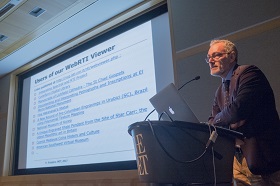
Roberto Scopigno has been invited to present a keynote talk at the Symposium on 'Illumination of Material Culture: A Symposium on Computational Photography and Reflectance Transformation Imaging (RTI)', jointly organized by the Metropolitan Museum and CHI at New York (USA), March 7-8, 2017. Scopigno has presented some recent results of the Visual Computing Lab concerning new technologies for web visualization of visual media (RTI images, 3D models).
The Met has grabbed a video of the presentation available on Facebook.
Joint CNR-ISTI and CNRS-MAP research lab on 3D digitisation and CH applications
Jan 12th, 2017
A new project has been recently financed, starting in 2017: a joint international research lab on 3D digitisation, where the skills and technical resources of CNR-ISTI and CNRS-MAP (led by Livio de Luca) will be integrated.
Several issues stand between the current 3D digitization technologies and their massive use, especially in the Cultural Heritage (CH) domain. The aim of this joint lab project is to integrate the skills and previous expertise of two international leader labs, to design new solutions to make massive acquisition really possible in the near future.
The main goal of the first part of the project will be to design new practical approaches for high-fidelity digitization and color/reflectance sampling, and to implement tools for web-based collaborative use and semantic enrichment of the 3D models. A collateral but not secondary result will the the design of a digitization platform to be shared with the respective Culture Ministries.
Check it out! FlexMolds on Siggraph Asia's official trailer!
Nov 29th, 2016
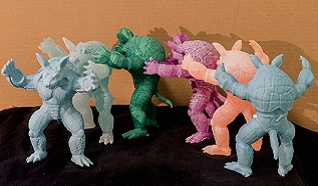
We are proud to announce that our paper FlexMolds: Automatic Design of Flexible Shells for Molding has been selected for the official cinematic trailer of the largest event on Computer Graphics in Asia! The paper will be presented in two weeks by Luigi Malomo .
FlexMolds: our new Siggraph Asia paper!
Oct 10th, 2016

Our last Siggraph paper is finally out: 'FlexMolds: Automatic Design of Flexible Shells for Molding'. Luigi Malomo, Nico Pietroni, Bernd Bickel, Paolo Cignoni, ACM Transactions on Graphics / SIGGRAPH Asia 2016
Enjoy the video !.
We have been nominated TWICE for the 2015 DIGITAL HUMANITIES AWARD !!!
Feb 16th, 2016
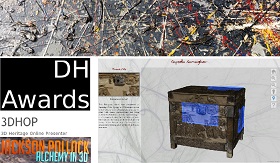
We need your help, please vote here: DH Awards 2015 .
Category 'Best DH Tool or Suite of Tools' ==> 3DHOP:3D Heritage Online Presenter
Category 'Best Use of DH for Public Engagement'==> Alchimia di Jackson Pollock / Jackson Pollock: Alchemy in 3D.
VCG opens the big GIAN program in India!
Nov 30th, 2015
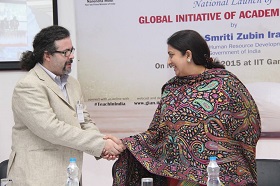
Marco Callieri from our lab was chosen to start the first course in the context of a huge initiative by the Indian Government. The Global Initiative of Academic Networks GIAN aims at involving the excellence of research in the world to meet with the Indian academic and research centers. Marco will give a course titled ' 3D Digitization for Cultural Heritage ' between 30th November and 11th December 2015. The webcast of the course can be accessed at iitgn.vmukti.com .
Best Paper Award at DIPP2015!
Oct 12th, 2015
Our work LecceAR, an augmented reality app for iOS won the best paper award at the Digital Presentation and Preservation of Cultural and Scientific Heritage (DIPP2015) conference. This work enriches the camera streaming of a mobile device (i.e. tablets or smartphones) inserting 3D models in a seamless way. More information about this project can be found at the official website of the app LecceAR.
Digital Heritage 2015, a success?
Oct 12th, 2015
Yes, Digital Heritage 2015 (Granada, Spain, Sept. 28 - Oct. 2) was an extremely successful event. VCGlab has contributed substantially to this event, R. Scopigno co-chaired the IPC and we presented three papers. We are proud of the results: more than 300 submissions, around 500 participants and a very rich scientific program. Responses got so far are very good.
We have also received one of the Best papers Award, for the paper: ' Alchemy in 3D – A Digitization for a Journey Through Matter' ( project's webpage Alchemy in 3D) by Marco Callieri, Paolo Pingi, Marco Potenziani, Matteo Dellepiane, Gaia Pavoni, Aurelia Lureau, Roberto Scopigno.
Independence day ??? Not in Italy...
Jul 4th, 2015
Today our colleague Matteo (Dellepiane) got married with Paola. It was a great ceremony in Genova (birth town of both Matteo and Paola), in a very nice small church on the top of the cliffs and a wonderful sea panorama. After the wedding ceremony, we had a excellent and long lunch (following Italian traditions) in the hills on the back of Genova. Matteo and Paola are leaving for a wonderful honeymoon travel in Mongolia, all of us envy them a lot.
With the best wishes of all the Visual Computing Lab!!!
Tales from the crypt.
Apr 21th, 2015
The VCG lab, as a partner of the European project Iperion, made the 3D reconstruction of the rock-cut church of S. Angelo, Mottola (TA), ITALY.The structure develops on two underground floors both divided into three still well-preserved frescoed naves. The lower floor was primarily used as a burial crypt as evidenced by the presence of several graves, lined up on the floor, and a chapel, which served as a cell for the guardian monk. Aims of the campaign were the acquisition of an accurate three-dimensional model for the metrical analysis combined with a good photographic documentation about the conservation state of some frescoes. But don't worry, you'll soon experience the thrill to visit this amazing crypt with the virtual navigation!
The Alexander Mosaic.
Apr 21th, 2015
The VClab lab, as a partner of the European project Iperion, took part in conservation-oriented analysis of 'The Alexander Mosaic' preserved at the National Archaeological Museum of Naples. The artwork, portraying the battle of Issus between Alexander the Great and Darius III, was discovered in 1831 in Pompeii on the floor inside the House of the Faun, measures 582 × 313 cm and consists of about one and a half million tiny polychrome tiles next to 4 mm of side.The Vcg lab created the three-dimensional model of the mosaic using a structured light scanner. The surface in question, glossy, flat and very smooth, has required the acquisition of a large amount of data.
Superb result for VClab at SIGGRAPH 2015, the computer graphics top conference.
Apr 21th, 2015
The preliminary results of the ACM SIGGRAPH 2015 selection process has been recently announced. Three submissions from Visual Computing Lab have been conditionally accepted. This would be an excellent result, since SIGGRAPH is the premier worldwide event in computer graphics and visual technologies, with an extremely tough selective process.Let us wait for the final acceptation to disclose the title and authors of these works. Those submission are on Geometry Processing (Digital Fabrication e Interactive 3D Modeling for Entertainement Industry). Stay tuned...
Have a journey inside a Jackson Pollock masterpiece!
Mar 20th, 2015
The Visual Computing Laboratory of ISTI-CNR, in collaboration with the Opificio delle Pietre Dure and the Peggy Guggenheim Collection has carried out the three-dimensional diagnostic analysis of the painting 'Alchemy' by Jackson Pollock. Exploiting cutting edge technologies of 3D scanning and three-dimensional computer graphics, it was possible to measure and visualize the art of Jackson Pollock with incredible detail. Discover more at Alchemy in 3D.
Piccante 0.4 the hottest HDR library with OpenGL support
Gen 29th, 2015
The new version of Piccante, a C++11 multi-platform (windows, mac os x, and linux) open-source (MPL license v2.0) imaging library, is now out!The new version provides a better support for OpenGL 4.0 Core Profile and novel algorithms on the GPU: improved memory management, image operators, better image statistics via redux, exposure fusion, Drago and Reinhard tone mapping operators, push-pull, edge-aware filtering, etc
Roberto Scopigno chosen for November 2014 “People of ACM” section
Roberto Scopigno, Head of Visual Computing Lab, has been chosen by ACM for its 'People of ACM' monthly section.Roberto is the first Italy-based researcher who has been selected and interviewed. Congratulations Roberto!
The book Introduction to Computer Graphics: a Practical Learning Approach is out
Oct 15th,2014
The book Introduction to Computer Graphics: a Practical Learning Approach by F.Ganovelli, M.Corsini, S.Pattanaik and M.Di Benedetto is out!
This book guides students in developing their own interactive graphics application. The authors show step by step how to implement computer graphics concepts and theory using the EnvyMyCar (NVMC) framework as a consistent example throughout the text. They use the WebGL graphics API to develop NVMC, a simple, interactive car racing game.Each chapter focuses on a particular computer graphics aspect, such as 3D modeling and lighting. The authors help students understand how to handle 3D geometric transformations, texturing, complex lighting effects, and more. This practical approach leads students to draw the elements and effects needed to ultimately create a visually pleasing car racing game.
Piccante Library has been released
Aug 18th,2014
The Visual Computing Laboratory is proud to present the release of a novel C++11 imaging library, Piccante. Piccante is open source and distributed under the LPGL v3 license. Piccante can provide data structures and functionalities for different domains such as HDR imaging, image processing, and computer vision
Roberto got the EG
'Distinguished Career Award' 2014
Apr 12th,2014
Roberto Scopigno is the recipient of the Eurographics 'Distinguished Career Award' 2014, an award given every other year to a professional in computer graphics who has made outstanding technical contributions to the field and has shaped computer graphics in Europe.
Roberto Scopigno’s work has had a profound impact on the field of visual computing, and several contributions truly stand out. Of particular importance has been his work on surface simplification, LOD and multiresolution representations for surfaces and volumes. His papers on these topics have been cited widely and stimulated considerable follow-up work. The BDAM algorithm and its 3D extension, Tetra-Puzzles, grew over ingenious novel data structures for hierarchical seamless space subdivision and have inspired new multiresolution applications for the inspection of terrain models and gigantic meshes. He has been engaged in several research projects (funded by EU and national agencies). He is a recognized and reputed world-wide leader in the development of novel algorithms and techniques for Cultural Heritage and for the acquisition, preservation and visualization of digital copies of physical artifacts inherited from the past.
Roberto Scopigno is a recognized scientific leader. He has created a very successful research group at CNR Pisa, and several of his former students have themselves become well-known productive researchers. He has demonstrated a strong leadership in Computer Graphics research in Europe, and he has been a major actor in shaping Computer Graphics in Italy. Roberto has significantly advanced the field through his work and energy, and by setting a personal example.
The complete award citation is available here
Coins on the web with RTI technology
Feb 28th,2014
The results of a cooperation linking the Visual Computing Lab (ISTI-CNR) and two CH partners, the Foundation Palazzo Blu and the Superintendency in Pisa have been presented with a seminar organized at the Museum Palazzo Blu in Pisa on February 28th, 2014.
This collaboration is focused on the digitization of a subset of coins selected from the two important collections conserved by the Museum Palazzo Blu and Museum S. Matteo.
ISTI-CNR has digitized those coins using Rflection Transformation Imaging (RTI) technology; the set from the Museum Palazzo Blu was digitized with a proprietary dome for RTI acquisition developed by ISTI-CNR. Then, two multimedia kiosks have been designed and installed in the museums.
The one implemented for Museum Palazzo Blu is now also accessibe via web at url: http://vcg.isti.cnr.it/PalazzoBlu/
As far as we know, this is the first example of RTI digitized material made accessible on the web and enriched by an interactive multimedia system able to integrate the RTI data with standard descriptive information.
Meshlab in the Apple's 30th birthday video
Jan 23th,2014
Meshlab appears in the Apple celebrative video at 2.52
MeshLab reaches one million downloads
Jan 17th, 2014
MeshLab reached an important milestone: 341,000 downloads in year 2013 and a total of 1,006,363 downloads in its entire history, started in 2005 as an academic didactic project. This is a demonstration of the consolidation of the MeshLab tool and of the size of its user community. MeshLab is now used in many different application domains: 3D digitization, rapid reproduction, Digital Humanities and Cultural Heritage, and many others. It is also an important resource for research in graphics and computer vision, leading to more than 1,340 citations/acknowledgements in scientific papers.
A GOM scanner at CNR-ISTI
Dec 20th, 2013
We announce the availability of a new, high quality 3D scanner at CNR-ISTI. After a survey of the commercial systems, we have decided to buy a GOM Atos Compact Scan 5M system (fringe projection and triangulation). The scanner was delivered on mid December and we are planning the first acquisitions. This system will complement the scanning facilities of the Visual Computing Lab, which include: two Konica Minolta VI-910 triangulation scanners (triangulation, short range); NextEngine (triangulation, short range); FARO Photon 120 (phase shift, medium-long range).
An award-winner 3D artist cites MeshLab!
Dec 11th, 2013
A Belgian artist, Isaie Bloch, is the winner of the prestigious '3D Printshow Artist Of The Year Award'. The opening of the citation is as follows: 'Artist Isaie Bloch has won this year’s 3D Printshow Artist Of The Year Award. Isaie’s technology of choice is Autodesk’s 3DS Max and the opensource 3D mesh processing wonder that is Meshlab.'
We are proud of the citation to MeshLab and the enthusiasm of this highly qualified user!
More info on this news here
An award at 'Digital Heritage 2013'!
Nov 7th, 2013
The Digital Heritage and Autodesk Award “Best Research Team” went to the Visual Computing Lab of CNR-ISTI.
'Digital Heritage 2013'
Nov 1th, 2013
Co-chaired by Sofia Pescarin in Marseille (France), registered 647 attendees and 101 full and 110 short papers, among more than 500 submissions, was a big success.
The Best Applications Award - Quality of Content went to the Imago Bononiae installation produced by CNR-ITABC, CINECA and Univ. of Bologna; a paper authored by CNR-ISTI was among the six selected Best Papers invited for submitting an extended version to the ACM JOCCH journal;
Award!
Feb 9th, 2013
Our PhD Student Luigi Malomo won the Eurographics Italian Chapter Best Master Thesis Awards
Registration to CG Libs is open!
Feb 9th, 2013
This year event of the Italian Chapter of Eurographics will be held in Pisa, June 3-5: save the date!
Francesco Banterle new Editor in Chief of the Journal of Graphics Tools
Jan 25th, 2013
Our fellow Francesco Banterle was appointed Editor in Chief of the Journal of Graphics Tools
Best Paper Award
Aug 5th, 2012
Our paper Adaptive Quad Patches: an Adaptive Regular Structure for Web Distribution and Adaptive Rendering of 3D Models won the Best Paper Award of the 17th edition of ACM International Web3D Conference.
Roberto Scopigno appointed Editor in Chief of ACM Journal of Computing and Cultural Heritage
May 1st, 2012
Roberto Scopigno has been appointed Editor in Chief of ACM JOCCH - Journal of Computing and Cultural Heritage for the term 2012-2015.
ACM JOCCH, established in 2008, is the main international journal on the theme of the innovative methodologies and uses of Information and Communication Technologies (ICT) in support of Cultural Heritage.
3D scanning in Venice
June, 2012 (Italy)
We have recently scanned the Capsella Samagher, a small but incredibly precious artwork conserved at the National Archaeological Museum in Venice. It is a small devotional ivory casket, with carved faces depicting scenes from early Christianity (e.g. an early representation of St. Peter Basilica in Rome). This scanning is part of a restoration and musealization project.